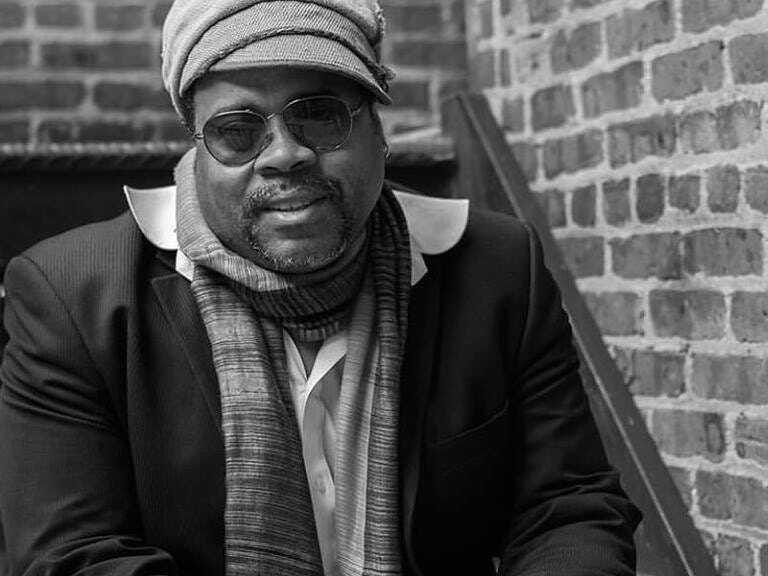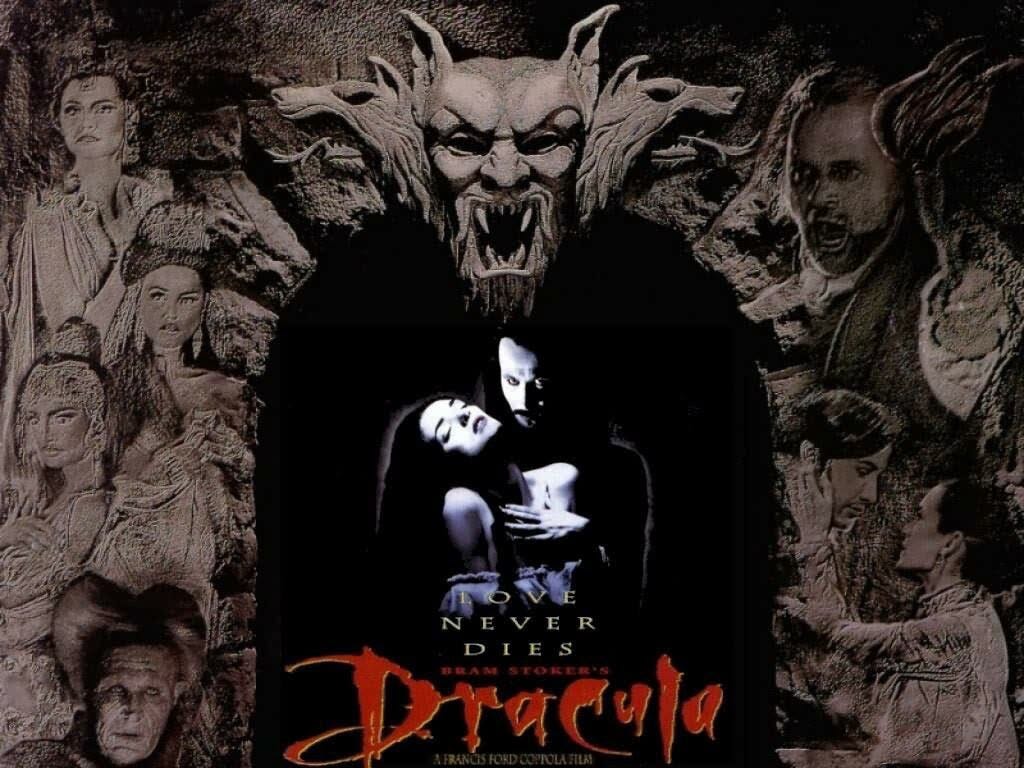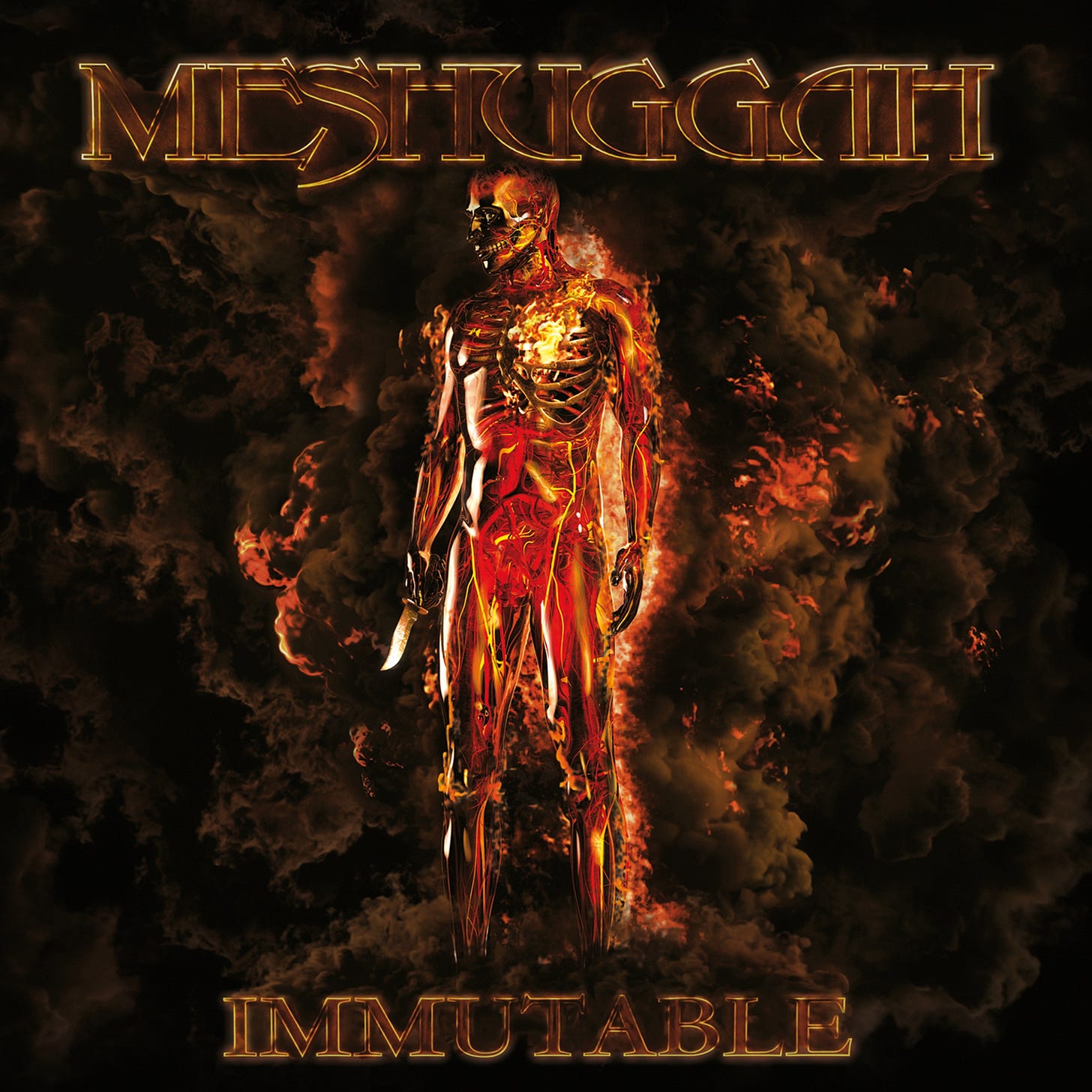Input/Output: What I read, watched, and heard
New Meshuggah, old criticism, and a trio of gloomy goth movies
I am writing to you from the back seat of the Bellows-mobile, driving through the rain on the way back to Brooklyn after a successful one-off show at Tubby’s in Kingston, NY. My plan was to have the next entry of Drumming Upstream finished for this week. I even got as far as filming my cover. But the written portion isn’t quite there yet. To tide you over, here’s another grab bag of media I’ve consumed recently. Hopefully I’ll have Drumming Upstream 8 ready before Bellows kicks off our two week tour of the near midwest and south. Speaking of which, here are those tour dates:
4/13 - Philadelphia, PA @ Johnny Brenda’s
4/14 - Brooklyn, NY @ TV EYE
4/15 - Rochester, NY @ Bug Jar
4/16 - Pittsburgh, PA @ Mr Roboto Project
4/18 - Chicago, IL @ Golden Dagger
4/19 - Nashville, TN @ DRKMTTR
4/20 - Atlanta, GA @ Masquerade
4/21 -Asheville, NC @ Static Age
4/22 - Durham, NC @ Pinhook
4/23 - Washington, DC @ DC9
That will have to suffice for this week’s “output” portion. Stick around for the input below.
What I’ve Been Reading: Flyboy In The Buttermilk by Greg Tate & The Face of Another by Kobo Abe
I finished Moby-Dick right before the last quick run of Bellows dates, if you aren’t sick of reading about it or seek spoilers you can click on the footnote here for my thoughts on the final 8% of the book.1 Since then, for varieties sake, I burned through Flyboy In The Buttermilk by the late great Greg Tate. Despite introducing myself as a music critic to strangers at parties for years, I had never heard of Tate’s work until he passed away last year. From the flow of online memorializing, I clicked on his review of Kendrick Lamar’s Damn as well as his comparative consideration of the state of Black semiotics, titled “Yo! Hermeneutics!”. Both pieces blew my mind. Serendipitously my Mom gifted me this collection of Tate’s writing from the 1980s and early 90s. Thanks, Mom!
The book is split into two equally sized sections covering his music and literary criticism each and then a much shorter selection of essays on public trials of the day. What blew my mind when I first read Tate’s work online was the flexibility of his style, the ease at which it could incorporate the rhythm of speech and slang without sounding overworked. What blew my mind a second time was how even his flexibility was flexible, as Tate was as omnivorous in his choice of subjects as he was with his choice of words. In the first section he moves effortlessly from hardcore punk to jazz, through George Clinton and onto then ascendant hip-hop stars like Ice-T and Public Enemy. Nowhere on this trajectory does Tate’s perspective feel even the slightest bit shaky. Then in part two he zooms out to show that music was only a small part of the picture. The range of subjects explains the style and vice versa.
Flyboy achieves maybe the most coveted goal of any collection of criticism. It gives fresh insight to work I was already familiar with, and has lit a fire under my ass to get acquainted with the work I didn’t know by name.
After finishing Flyboy, and still seeking something on the short side before tackling another one of the doorstoppers that have been pilling up on my shelves, I picked up The Face of Another by Kobo Abe. I’ve gotten about 2/3rds of the way through, but I’m going to hold off on saying too much about how I feel about it before it wraps up.
What I’ve Been Watching: Bram Stoker’s Dracula, The Batman, The Crow
Without really intending to, I’ve gone on a stretch of watching movies for goths. First came Bram Stoker’s Dracula, starring the creature of the night longest in the tooth. For years I’d only know this film by the cover of its VHS, which I remembered bearing down on me from the upper rung of a book shelf on my Uncle’s farm as a child. Then came the latest iteration of a younger variety of less supernaturally gifted but no less cursed bat man, as played by Robert Pattison in The Batman, Finally, splitting the difference between the two, I watched Batman’s pen and paper successor and The Batman’s cinematic antecedent, The Crow, which in true Gen-X fashion puts the fabricated moroseness of the first two movies to shame by being literally the site of a tragic death.
What I’ve learned from these pasty nocturnal haunts is that at the center of every brooding gloomy goth hides a big and goopy heart. Gary Oldman’s Count and Brandon Lee’s Crow both defy death itself through sheer force of romantic love, while Pattinson’s Bruce Wayne learns over the course of a day-off-on-tour time killing three hours how to care for his inner child.
In each movie, love’s necessity is defined by its relationship to and contrast against the darker results of such overflowing passion. In Dracula, ol’ Vlad’s eros is corrupted by his hatred, festering in his rage at man for centuries until he’s as much an insatiable predator as he is a passionate lover. Wayne’s anger almost wins the day in The Batman, until he sees it grotesquely reflected back at him in the shape of Paul Dano’s Riddler and his armed militia of Discord copycats, a crisis of influence that the movie’s score likens to Kurt Cobain staring in horror at the coming wave of post-grunge lunkheads. Of the three The Crow is the most glib about it’s violence, happy to indulge in foul mouthed one liners and splash page shootouts in a way that, combined with its otherwise after-school sentimentality, make it feel like a teenage fairytale, charming but by its nature a little juvenile.
But for those with more life under their belts, The Crow has no less a haunting effect. Brandon Lee’s death on the set of the film hangs over each shot of the film in an eerie marriage of form and content that no movie deserves to call its own. Lee appears on screen wearing the make-up he died in, playing the role of the dead man yet living, telling us that nothing in life is trivial. The omnipresence of death in these films, real and imagined, points to the fragility of life, both in the hands of forces beyond our control and tragically within them, and thereby how seriously it must be handled.
What I’ve Been Listening To: Immutable by Meshuggah
I recently started up another round of Micro Reviews on my Instagram, this time covering CDs that I used to own but have since lent to friends or lost track of. A good number of these are all time favorites, mostly accrued during my late high school and early college years. Maybe because of this hindsightly lens, the only new release to break into my rotation is Meshuggah’s Immutable, their ninth album overall and their fourth new release since I first heard them in 2005. In the 17 years since, only half of Meshuggah’s 34 year career, heavy metal has re-smithed itself in the Swedish group’s wake while they remained themselves with unbudging consistency. Contrary to claims of their stick-in-the-mud complacency, Immutable reveals that with enough time Meshuggah will find even the smallest of new wrinkles to their sound and exploit them to thunderous ends.
The world has never been better equipped to have these wrinkles pointed out to prospective listeners. While the last two Meshuggah albums hit the streets following the influx of the AxeFXed, 8-string slinging djentry, Immutable is the first to wander out of the studio and straight into the content farms. Making sense of Meshuggah’s music is a genre unto itself on the digital world’s source of dinner-time edutainment, YouTube.2 As we speak, every note of the album is being transcribed, performed, and filmed for an audience of onlookers eager to see how their polymetric sausage is squeezed into the common time tube. What I hope does not get lost, and what I believe will remain after the gold rush on their riffs has subsided, is that Meshuggah only earn this much scrutiny because their music is fun. It is loud, inhospitable, and takes a number of false starts in order to get the hang of, but once you catch the rhythm nothing else will quite scratch the same itch again. Which reminds me of something else….
What I’ve Been Playing: Dark Souls, still.
Look, it’s a hard game. I’ve got nothing new to say about it at the moment, give me another month or two.
Where I’ve Been Going: Dream House
On the recommendation first of Yeah Yeah Yeah’s drummer Brian Chase in June, 2018 and then of multi-disciplinary ambient musician Ben Seretan in March, 2022, I visited La Monte Young and Marian Zazeela’s light and sound installation Dream House along with darkwave singer Julia Gaeta, who was visiting from Paris.
(There, that sentence should contain enough name-dropping to meet this quarter’s quota to keep my license with the Brooklyn Registry of Clout and Credibility.)
Dream House is two rooms and a hallway, a handful of lights, a small shrine, some pillows, and two giant speakers pumping out sine waves. You are not permitted to speak, use your phone, or take pictures or video of any kind. Instead you are encouraged to move, be still, and listen. The room is designed so that the sound pumping out of the speakers changes ever so slightly depending on your exact location. As you walk, sit down or stand up, lie prone or crane your neck, the sound in the room changes in ways that would be difficult to describe using traditional notation.
We spent roughly 45 minutes in the room, although you could have told me I’d been in there for anywhere between 15 and 90 minutes and I would have believed you. Just as individual notes are difficult to pull out of the swirl of sound, individual moments melt away into a continuous flow of being. My mind returned to the old question of monophony vs polyphony. Is the sound I’m hearing the combination of many frequencies or am I hearing different aspects of a single sound? More importantly, is making such a distinction useful or necessary in order to appreciate the experience? This line of inquiry is a gentle slope towards the the type of vaguely eastern spiritual questing that I’m sure Young and Zazeela intended their visitors to slide into. But even if that kind of meditation ins’t your bag, the silent contemplative experience of Dream House is so inherently personal that I’m sure you’d get something out of it if you met it halfway.
That’s all for this week, back to the drafting board for Drumming Upstream, which I promise will for real arrive in your inbox next Monday!
When I made it to the final stretch of Moby-Dick I was reminded of The Ringer’s Justin Charity saying, in his guest appearance on The Human Instrumentality Podcast, that when people think about Neon Genesis Evangelion they are primarily thinking of its final third. The same is true, in my experience, of the plot of Moby-Dick. It was only in the last hundred pages of my copy that the hunt for the titular whale took center stage from the three-ring circus of seafaring hijinks, amateur cetology, and the complete employer manual for aspiring whalers. I joke, but all of that time spent in what at first appeared to be ephemera had a way of clarifying the action of the finale. Melville showed you every inch of the Pequod and every sinew of the Sperm Whale in such precise detail, and then sends the two smashing into each like the world’s most longwinded pre-game show. All of this wind up only makes the ease with which Moby-Dick mops the Pacific Ocean with Ahab more shocking and even darkly funny.
I say this well aware that I will join those ranks soon enough via Drumming Upstream. Pray for me, fellow drummers.







